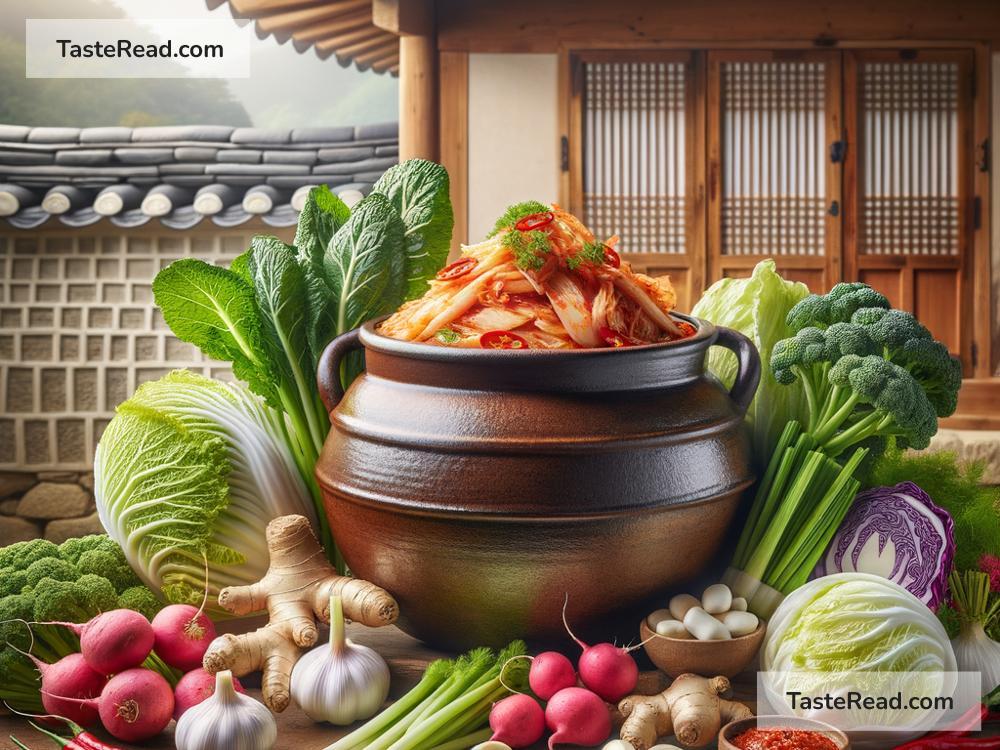The Ancient Origins of Kimchi: A Journey Through History
Kimchi is a traditional Korean food that has gained popularity all around the world. With its bold flavors and health benefits, it’s loved by many. But did you know that kimchi has been part of Korean food culture for thousands of years? Its origins are fascinating and tell the story of how food and history are often deeply connected.
What Is Kimchi?
Kimchi is a type of fermented food made from vegetables. The most common ingredient is napa cabbage, though radishes, cucumbers, and other vegetables can also be used. The flavor comes from a mix of spices like red pepper flakes, garlic, ginger, and fish sauce. It’s tangy, spicy, and sometimes just a little sour due to the fermentation process.
While kimchi is now famous worldwide, it’s much more than just food in Korea. It’s a symbol of history, tradition, and shared community. To truly understand kimchi, we have to travel back in time.
The Beginnings of Kimchi: A Look at Korea’s Ancient Past
The story of kimchi begins over 2,000 years ago. During this time, Korea was an agricultural society that depended on farming to survive. However, winters in Korea were harsh, and many fresh vegetables would perish in the cold. People needed a way to preserve food so it could last through the winter months.
This is where fermentation, a natural preservation method, became important. Fermentation allowed Koreans to keep vegetables edible for long periods without refrigeration. This process involved adding salt to vegetables, which kept harmful bacteria from growing while encouraging the growth of beneficial bacteria that could naturally preserve the food.
In the early years, kimchi wasn’t the spicy red dish we know today. Historical texts from Korea mention plain fermented vegetables as far back as the Three Kingdoms Period (57 BCE–668 CE). During this time, kimchi was simple, typically made from raw vegetables mixed with salt and brine.
A Turning Point: The Arrival of Chili Peppers
Fast forward to the 16th century—this is when a major change in kimchi’s history took place. Chili peppers arrived in Korea during this time, brought from the Americas through traders. Before then, there were no spicy ingredients in Korean cuisine, so the chili pepper was a revolutionary addition.
Koreans quickly adopted chilies into their cooking, and they became central to kimchi recipes. The red, spicy kimchi we often eat today wouldn’t have existed without the introduction of chili peppers. Combined with ingredients like garlic, ginger, and fish sauce, the flavors of kimchi became even more complex and unique. Over time, various regions in Korea developed their own versions, using different vegetables and spices based on local culture and climate.
Kimchi in Korean Culture
Kimchi has always been much more than everyday food; it’s a part of Korean identity. Making kimchi—called “kimjang”—is a tradition that brings families and communities together. Kimjang usually happens in late autumn, just before the winter season begins. Families gather to prepare huge batches of kimchi, enough to last several months.
Kimjang is not only about cooking; it’s also about teamwork and sharing. People help each other, exchange recipes, and talk about their lives. In 2013, UNESCO recognized kimjang as an Intangible Cultural Heritage of Humanity. This shows how meaningful the activity is, beyond just the food it produces.
The Health Benefits of Kimchi
People in ancient Korea didn’t know the science behind fermentation, but they understood that fermented foods like kimchi were good for health. Today, scientists have confirmed that kimchi contains probiotics—healthy bacteria that support digestion and boost immune systems.
Kimchi is also packed with vitamins and nutrients, thanks to its vegetable ingredients. The spices, including chili peppers, garlic, and ginger, are rich in antioxidants, which fight harmful substances in the body. Because of its benefits and delicious taste, kimchi has become a global health food.
A Global Phenomenon
Although kimchi has ancient, local roots, it has spread far beyond Korea. In recent years, Korean restaurants have opened in major cities around the world, exposing more people to Korean cuisine. As a result, kimchi has become a favorite among foodies who love bold flavors.
The rise of Korean pop culture, including K-pop and K-dramas, has also played a role in popularizing kimchi. Fans of Korean entertainment enjoy learning about Korea’s traditions, and food is a big part of that. Today, you can find kimchi in grocery stores, fusion dishes, and even as a topping for tacos and burgers.
Conclusion
Kimchi may seem like a simple food on the surface, but its history is rich and complex. From its origins as a way to preserve vegetables during tough winters to becoming a global culinary icon, kimchi has evolved alongside Korean culture. It reflects the resilience, creativity, and strong sense of community that Korea has always valued.
So the next time you enjoy a bite of kimchi, remember that you’re tasting thousands of years of history. It’s not just a dish—it’s a living tradition that has survived and thrived through the ages.


